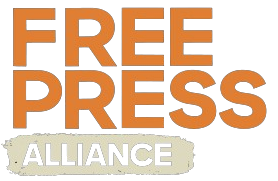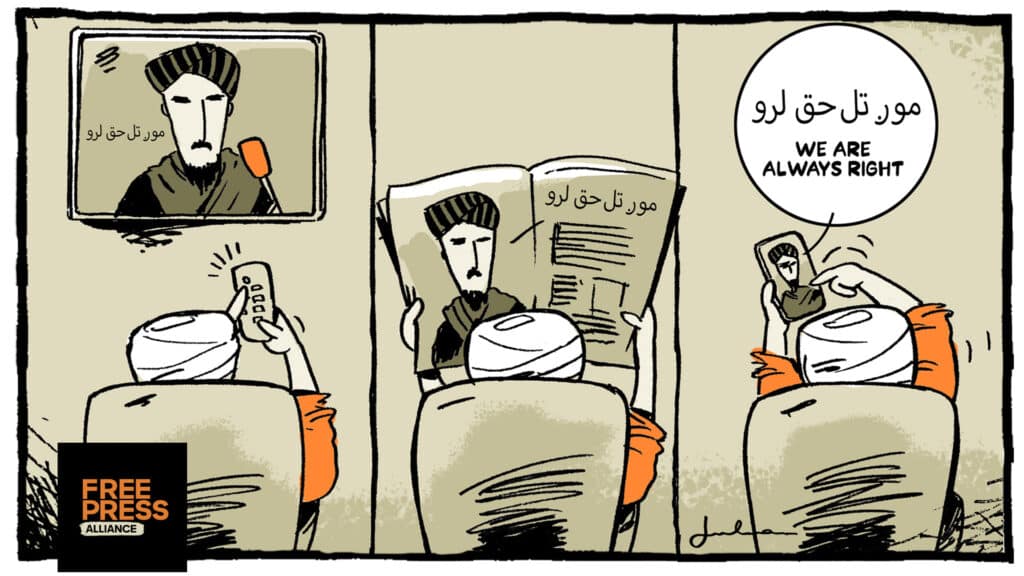Since the Taliban seized power in Afghanistan on August 15, 2021, the country’s media landscape has collapsed. Once home to a vibrant independent press that reached millions of readers, Afghanistan now faces a systematic campaign to silence dissent and turn journalism into a tool of state propaganda.
According to the Committee to Protect Journalists (CPJ), the Taliban has banned, suspended, or shuttered hundreds of independent outlets, while those that remain are tightly controlled. Authorities reject any news or opinion that deviates from their interpretation of “truth,” punishing even personal commentary as propaganda.
Meanwhile, the Taliban has built a media empire that spreads its radical Islamist ideology across television, radio, newspapers, and digital platforms such as YouTube, X, and Telegram.
Journalists as suspects and spies
Afghan journalists face relentless intimidation. Taliban agents monitor everything posted online and detain those who violate their stringent interpretation of Sharia law, which bans music, soap operas, and even programs co-hosted by male and female presenters.
“Taliban intelligence agents have launched a policing system where every journalist is expected to spy on others,” a former Afghan TV executive told CPJ. Reporters are forced to hand over extensive personal data, including contact details, addresses, and WhatsApp numbers, and are pressured to denounce colleagues or push official narratives. Refusal often leads to dismissal or legal and financial threats.
Female journalists are particularly targeted. Two reporters from western Afghanistan told CPJ that they had been summoned more than 10 times over the past two years. One recalled being threatened with death under the Taliban’s interpretation of Sharia for collaborating with exiled media.
Inside the Taliban’s media empire
The Taliban has repurposed Afghanistan’s largest public broadcaster, Radio Television Afghanistan (RTA), rebranding its radio division as Voice of Sharia Radio. With broadcasts in both Pashto (favored by the Taliban) and Dari (the country’s most widely spoken language), RTA now amplifies Taliban “achievements,” from diplomacy to refugee support.
Other long-standing outlets have been captured:
- Bakhtar News Agency, founded in 1939, now serves as the Taliban’s official mouthpiece, publishing in eight languages including Mandarin and Turkish.
- The Information Ministry runs daily newspapers such as Anis (Dari), Hewad (Pashto), and The Kabul Times (English).
- The General Directorate of Intelligence (GDI) operates Hurriyat Radio (launched in 2022), broadcasting Taliban military “successes,” and funds YouTube channels like Maihan and Yad, which discredit opponents and promote Taliban history.
The Taliban also revived Radio Police and launched Radio Omid, both promoting security and military narratives. Meanwhile, the official Alemarah News site, active even before 2021, continues as the Taliban’s central online outlet, run by spokesperson Zabihullah Mujahid.
Disinformation as policy
Beyond overt propaganda, Taliban intelligence runs at least four offices dedicated to online disinformation campaigns. These operations include creating fake social media accounts, paying influencers, and mobilizing troll farms to smear critics, simulate grassroots support, and drown out independent reporting.
As a result, only apolitical stories, such as traffic accidents or limited reports on health and education, are permitted. Even crime coverage is banned. This hollowing-out of news content ensures that Afghan society hears little beyond Taliban-sanctioned narratives.
Exiled journalists in danger
Afghan journalists in exile continue to report for outlets abroad, but they remain vulnerable. Many face threats, job loss, and censorship even outside Afghanistan’s borders (Nieman Reports). The Taliban frequently harasses family members who remain inside the country, creating additional pressure on those trying to maintain independent reporting.
Conclusion
Afghanistan has transformed from a country with one of the most dynamic media sectors in South Asia to one of the world’s worst jailers of journalists. By criminalizing independent reporting, weaponizing state media, and launching global disinformation campaigns, the Taliban has reshaped the Afghan information space into a tool of control and fear.
This dismantling of press freedom is not only silencing Afghan voices but also denying the international community a clear picture of what is happening inside the country.

